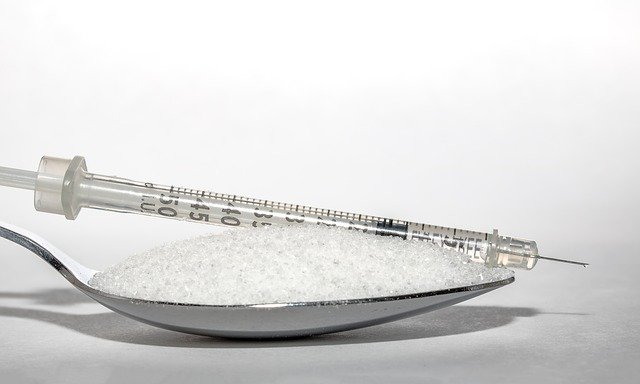Type 1 Diabetes, Definition, Risk Factors, Causes, Symptoms, Treatment and Prevention
Definition of Type 1 Diabetes
Type 1 diabetes or insulin-dependent diabetes is a long-term disease caused by a decrease in the function of the pancreas to produce enough insulin for the body. Insulin functions to control glucose (sugar) in cells obtained from the blood. In people with diabetes, the glucose found in the blood cannot be absorbed by the body's cells, causing various symptoms and complications.Risk Factors for Type 1 Diabetes
Some risk factors for type 1 diabetes include:Factors of family history,
When someone will be more at risk of developing type 1 diabetes if there are family members who have the same disease, because it is associated with certain genes.Geographical factors.
People who live in areas far from the equator, such as in Finland and Sardinia, are most affected by type 1 diabetes. This condition is caused by a lack of vitamin D that can be obtained from sunlight, thus triggering autoimmune diseases.Age factor.
Type 1 Diabetes is mostly detected in children aged 4-7 years, then in children aged 10-14 years.Other triggering factors,
such as consuming cow's milk at an early age, water containing sodium nitrate, cereals, and gluten before the age of 4 months or after 7 months, having a mother with a history of preeclampsia, and having jaundice at birth.Causes of Type 1 Diabetes
Type 1 diabetes is caused by the inability of the pancreas to produce enough insulin so that glucose in the blood cannot enter the cells. Disorders of the pancreas are thought to be due to an autoimmune process, which is when a person's immune system attacks healthy body cells.In type 1 diabetes, the immune system attacks and damages beta cells in the pancreas, so it cannot produce enough insulin.
Damage to pancreatic beta cells is caused by several things, including viral infections (enterovirus, Epstein-Barr virus, rubella virus, rotavirus, and mumps virus), consumption of certain drugs (pyrinuron and streptozotocin), and the influence of gluten.
Symptoms of Type 1 Diabetes
Some symptoms of type 1 diabetes include:- Weight loss.
- Blurred vision.
- Fatigue.
- polyuria, Frequent urination, especially at night.
- polydipsia, often feel thirsty.
- polyphagia, often feel hungry.
- Easily attacked by infectious diseases.
- The wound healing process takes a long time.
- Feeling stiff or tingling in the legs
Diagnosis of Type 1 Diabetes
Someone will be diagnosed with type 1 diabetes from the results of medical interviews, physical examinations, and supporting examinations, such as:- Blood and urine tests to determine glucose content in the body.
- Examination of HbA1c to determine the average glucose level in the blood of a person for the last 2 to 3 months.
- Autoantibody examination to distinguish between type 1 and 2 diabetes.
Complications of Type 1 Diabetes
Type 1 diabetes if not treated immediately can cause the following complications:
- Diabetic retinopathy,
Diabetic retinopathy is caused by damage to the blood vessels in the tissue at the back of the eye (retina). Poorly controlled blood sugar is a risk factor. - Diabetic neuropathy,
Diabetic neuropathy is a type of nerve damage that can occur if you have diabetes. High blood sugar (glucose) can injure nerves throughout your body. Diabetic neuropathy most often damages nerves in your legs and feet. - Stroke and coronary heart disease due to an increased risk of atherosclerosis, due to high blood glucose levels.
- Diabetic nephropathy,
Diabetic nephropathy is a progressive kidney disease caused by angiopathy of the capillaries in the glomeruli. It is characterized by nephrotic syndrome and diffuse scarring of the glomeruli. It is particularly associated with poorly managed diabetes mellitus and is a primary reason for dialysis in many developed countries. It is classified as a small blood vessel complication of diabetes - Sexual dysfunction, which results in erectile disorders, decreased sexual satisfaction, lack of sex drive, failure to reach orgasm, pain during intercourse, and dry vagina.
- Miscarriages and stillbirths in the fetus if blood glucose levels are not treated carefully
Type 1 Diabetes Treatment
Diabetes cannot be cured. Treatment is aimed at maintaining a balance in blood glucose levels and controlling symptoms. In addition, treatment is also done to prevent complications that can occur later in life. Some treatments given by doctors include:- Insulin to control blood glucose. Giving insulin is injected into the layer under the skin about 3-4 times a day according to the recommended dose of a doctor.
- A healthy diet and regular exercise to help control blood glucose levels.
- Take care of your feet and have your eyes checked regularly to prevent further complications.
Prevention of Type 1 Diabetes
Prevention efforts in type 1 diabetes include:- Underwent intensive treatment if there are family members who have type 1 diabetes.
- Take a DNA test to find out the presence of a carrier gene or type 1 diabetes.
Source:
Halodoc
Halodoc

0 Response to "Type 1 Diabetes, Definition, Risk Factors, Causes, Symptoms, Treatment and Prevention"
Post a Comment